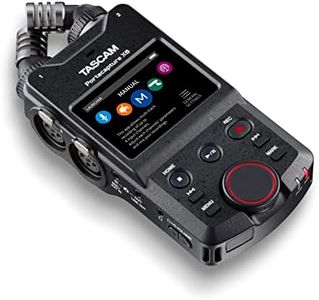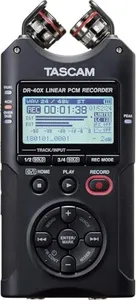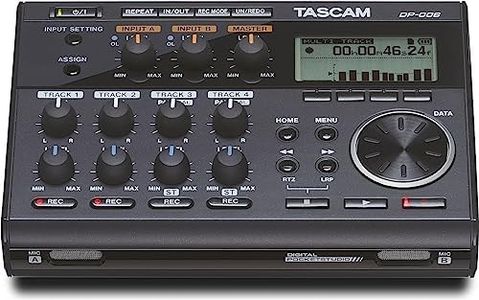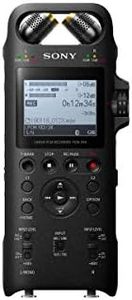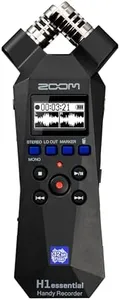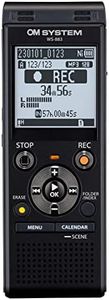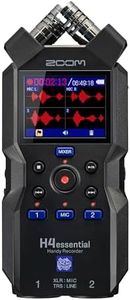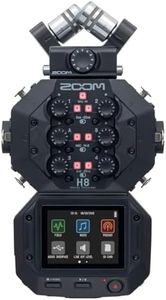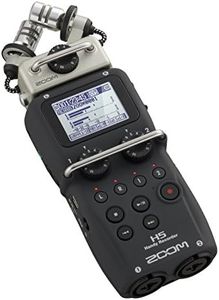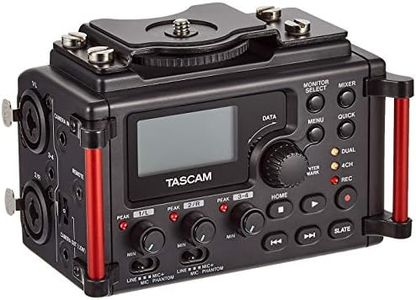We Use CookiesWe use cookies to enhance the security, performance,
functionality and for analytical and promotional activities. By continuing to browse this site you
are agreeing to our privacy policy
10 Best Portable Recorders
From leading brands and best sellers available on the web.Buying Guide for the Best Portable Recorders
Choosing a portable recorder is a matter of matching your recording needs with the features offered by the device. Whether you’re capturing interviews, making field recordings, or recording music, you need a recorder that is easy to carry, has sound quality that meets your standards, and provides functions that suit your typical use. It’s important to consider when and where you’ll use the recorder, what you’ll be recording, and how you plan to use the recordings afterwards. Taking the time to understand the main specifications will help you pick the best portable recorder for your situation.Microphone Type and ConfigurationThe built-in microphones on a portable recorder come in different types and arrangements, such as stereo (XY, AB), mono, or even multi-microphone arrays. The type and configuration affect how accurately and widely sound is captured. For interviews or spoken word, a simple mono or directional mic captures voices clearly. For live music or ambient sounds, a stereo configuration provides a sense of space and depth. Choose a recorder whose mic setup matches the main type of sound you intend to record.
Recording Quality and FormatsRecording quality is measured in terms of audio resolution—mainly sample rate (kHz) and bit depth (bits)—and also in file formats (such as WAV or MP3). Higher settings capture more sound detail, which is important for music and professional projects, but result in larger file sizes. Lower quality or compressed formats save space and are sufficient for voice memos or interviews. Think about whether you need broadcast-level quality, or if you just want to capture clear notes; this will help you choose the right settings.
Storage Capacity and ExpandabilityPortable recorders store audio on built-in memory or via removable memory cards (such as SD cards). Higher capacity allows you to record longer sessions at higher quality without stopping to offload files. Some users, like journalists in the field, may benefit from lots of storage and the ability to swap out cards, while others who frequently transfer recordings to a computer may not need as much built-in space. Decide how much storage you’ll actually need based on your average session length and frequency of downloads.
Battery Life and Power OptionsBattery life determines how long your recorder can run on a single charge or set of batteries. Some models use disposable batteries while others have rechargeable ones. For location or outdoor use where charging might be difficult, longer battery life is critical. Studio or indoor users who can recharge more easily may not require extended runtime. Choose the power system that will keep you recording without interruption during your typical sessions.
Inputs and ConnectivityInputs and connections let you attach external microphones, headphones for monitoring, or connect to computers. Some recorders offer basic headphone and line-in jacks, while others have more advanced features like XLR inputs for professional mics or USB ports for file transfer. If you plan to use external mics or accessories, make sure the recorder’s inputs match your gear; casual recorders may not need many connection options, but advanced users will.
Size and PortabilityThe physical size and weight of a recorder determine how easy it is to carry around and hold during use. Smaller, lighter recorders are ideal for travel, spontaneous interviews, or on-the-go recordings, while larger units might offer more controls and better sound quality but at the cost of convenience. Think about when you’ll use the recorder and whether you prefer a pocket-sized device or don’t mind something a bit bulkier for added features.
User Interface and ControlsHandling and usability are shaped by how the recorder’s buttons, screen, and menus are arranged. Simple controls are great for quick, stress-free recording, especially for beginners, while more detailed controls let experienced users fine-tune settings. If you often record in unpredictable situations, look for an easy-to-use layout; if you want lots of features and customization, be ready for a steeper learning curve.

